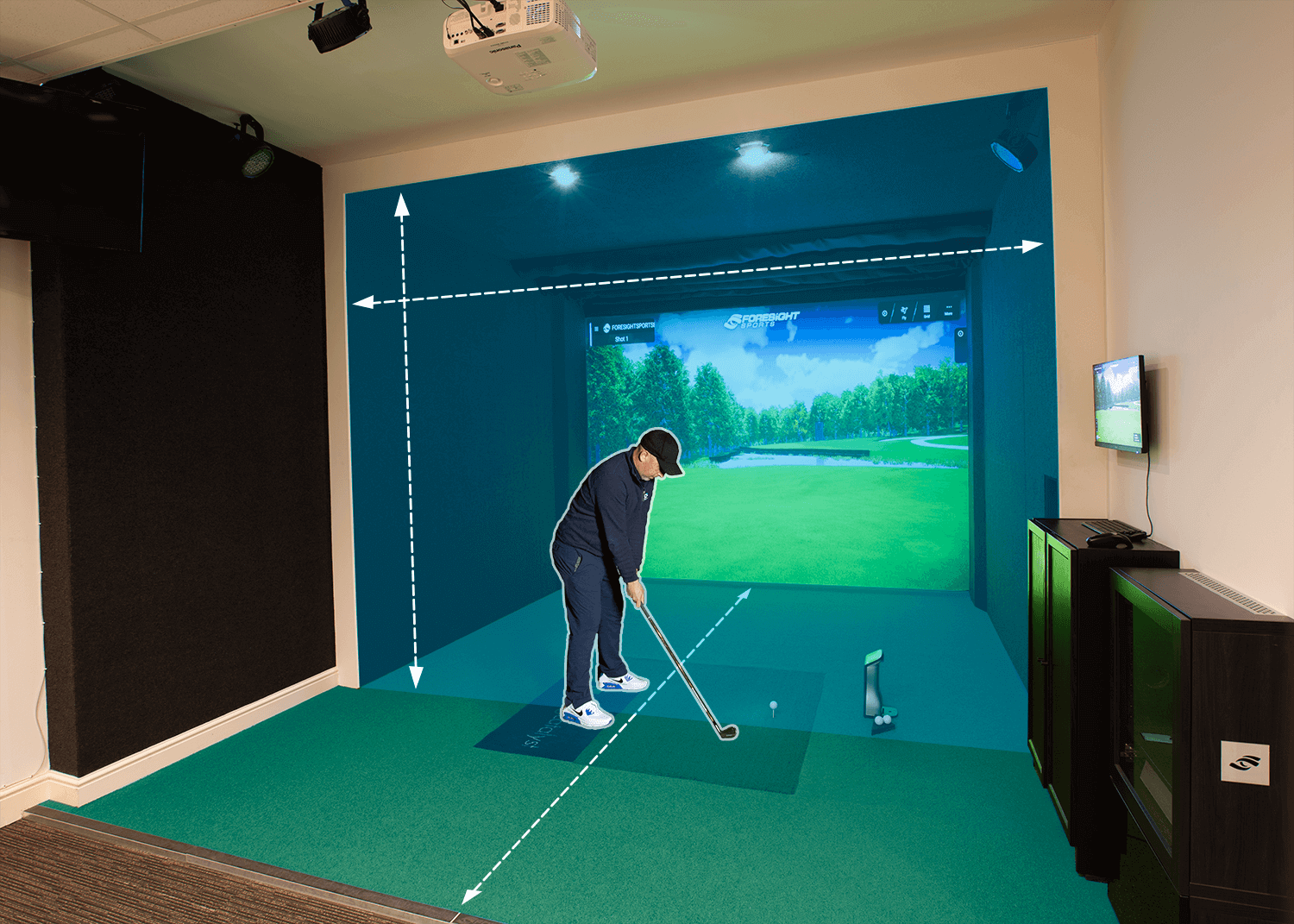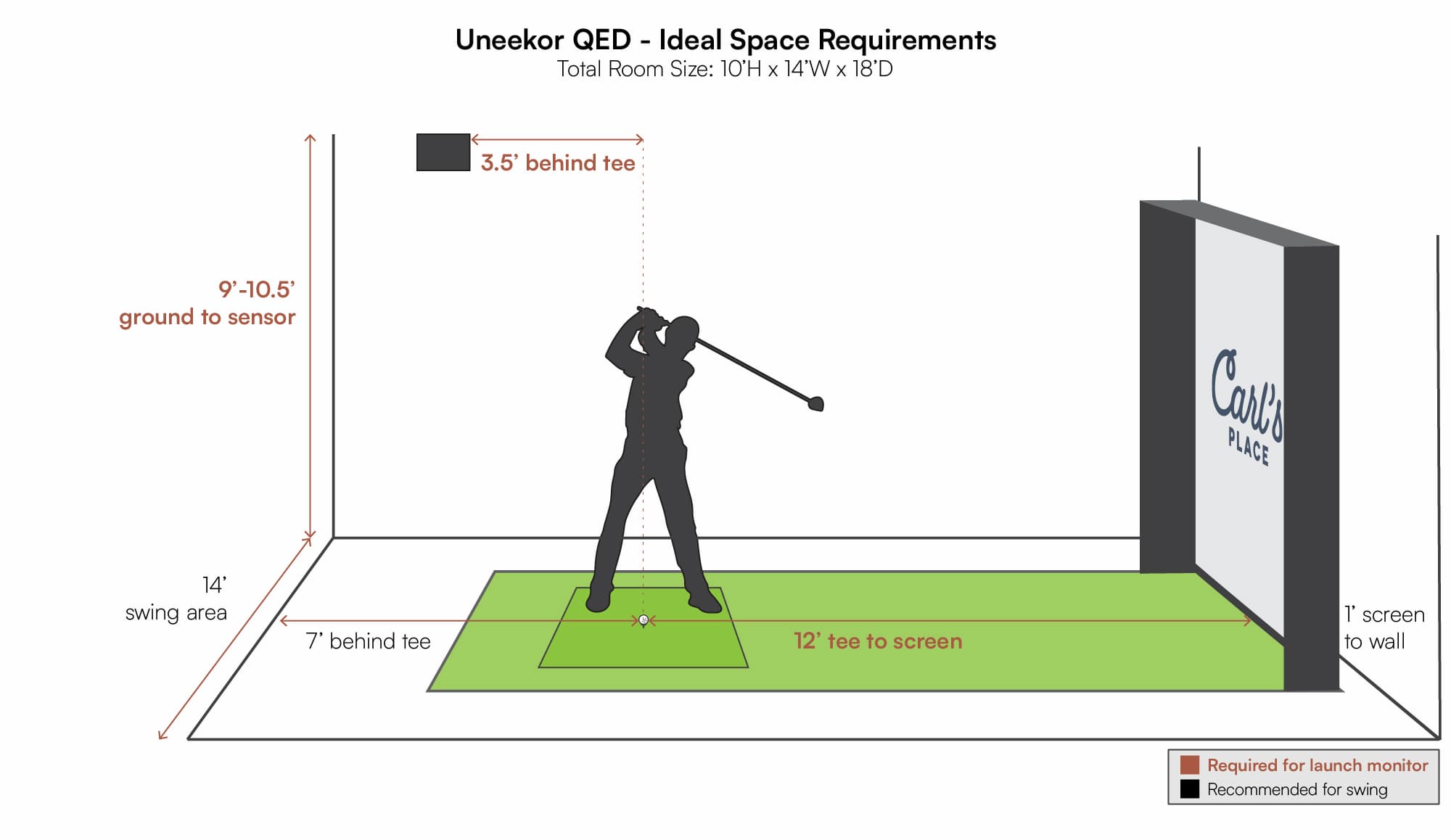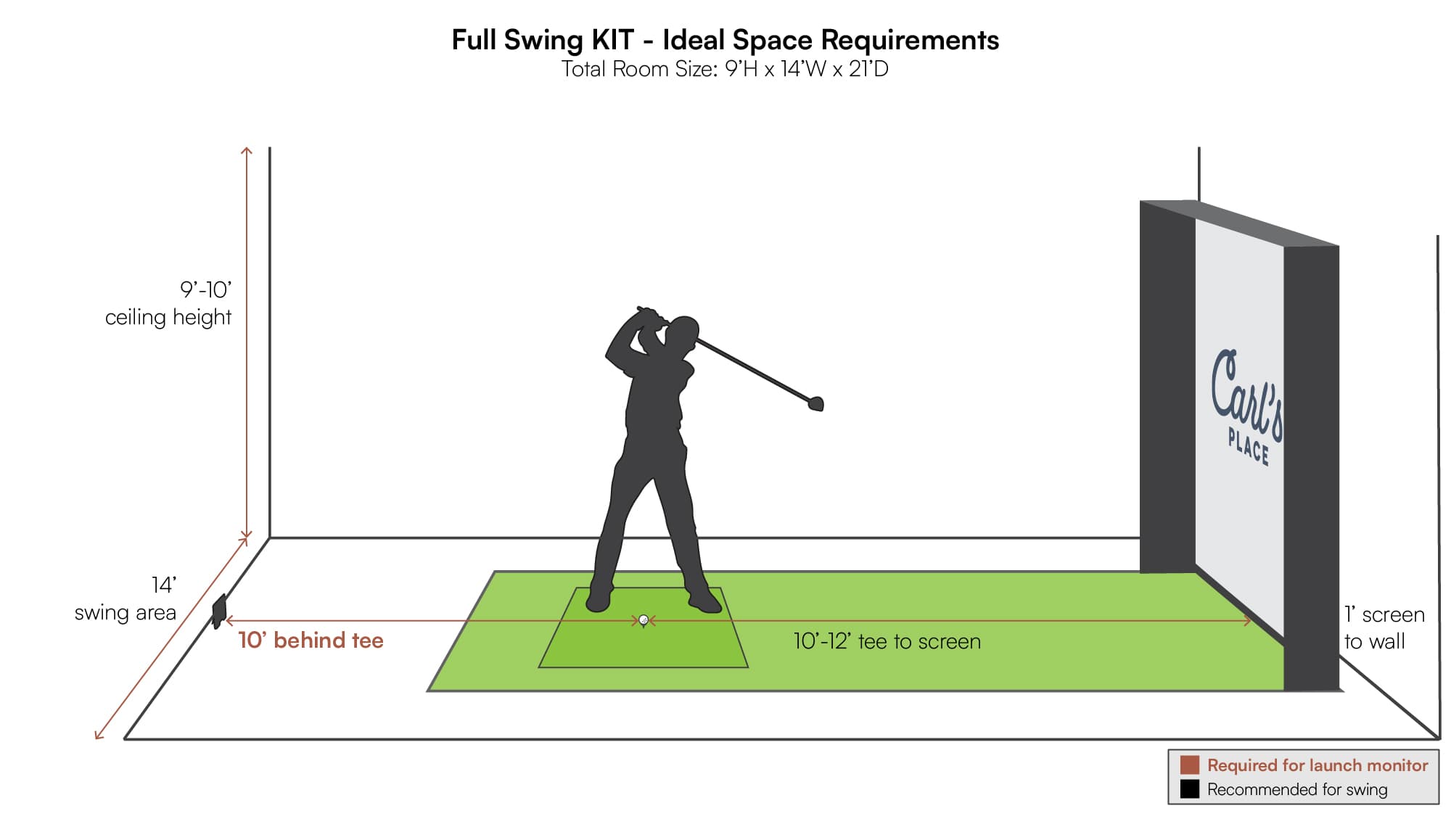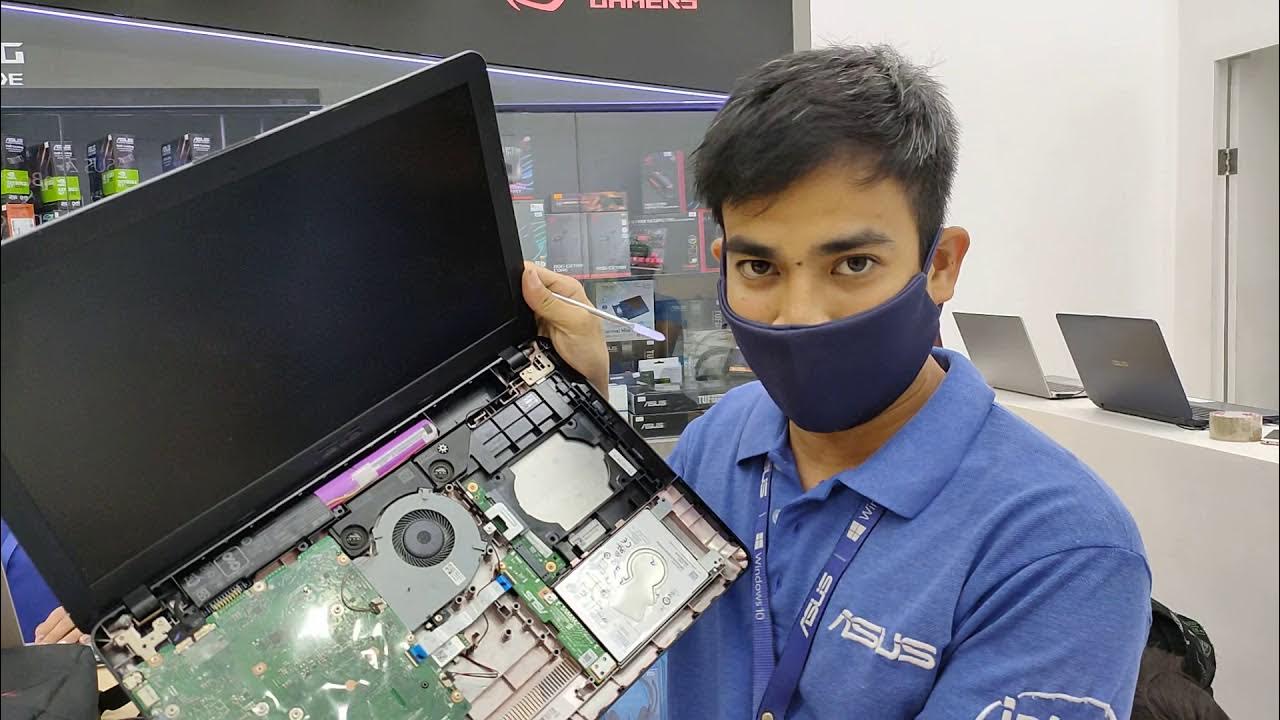A golf simulator requires a minimum of 10 feet high, 12 feet wide, and 15 feet in depth to allow for comfortable swing space and accurate shot tracking. Transforming your living room into a virtual golf course sounds like a dream come true for any avid golfer.
With advancements in technology, it is now possible to experience the thrill of playing your favorite game from the comfort of your own home. But before you embark on this exciting venture, you may be wondering how much space you actually need for a golf simulator setup.
We will explore the ideal room size for a golf simulator, taking into consideration factors such as swing space, shot accuracy, and overall gameplay experience. So read on to discover the perfect dimensions for creating your very own virtual fairway.
Factors To Consider
When setting up a golf simulator, one of the most important factors to consider is the room dimensions. The ideal room size will vary depending on the type of simulator you have and the amount of space you have available.
For a basic simulator setup, a room with a minimum width of 10 feet and a length of 15 feet would be sufficient. However, if you want to have more space for swinging the club freely without any restrictions, it’s recommended to have a room with a width of at least 15 feet and a length of 20 feet.
The ceiling height is another crucial consideration when determining the room for a golf simulator. Having sufficient height will allow you to swing the club without worrying about hitting the ceiling or lights, ensuring a comfortable and realistic experience.
Most golf simulators require a minimum ceiling height of 8 feet to accommodate the swing and follow-through. Additionally, it’s advisable to have a few extra feet of clearance above to prevent any potential mishaps. Therefore, a room with a minimum ceiling height of 9 feet is recommended for optimal performance.
The layout and design of the room play a vital role in creating an immersive and enjoyable golfing experience. It’s important to organize the space efficiently to ensure sufficient room for the simulator while also considering other elements such as furniture, lighting, and soundproofing.
A rectangular-shaped room is generally preferred for a golf simulator setup, as it allows for a clear and unobstructed range of motion. Additionally, placing the screen on one of the shorter walls and positioning the hitting area parallel to it creates a more natural and realistic golfing experience.
| Pro Tip: | Consider soundproofing the room to minimize distractions and enhance the overall experience. |
By carefully considering these factors – room dimensions, ceiling height, and layout and design – you can create the ideal space for your golf simulator. Whether it’s for recreational practice or professional-level training, having the right room setup will undoubtedly enhance your golfing experience.

Credit: foresightsports.eu
Minimum Space Requirements
Golf simulators require a minimum space of around 10 feet wide, 10 feet deep, and 9 feet high to ensure proper swing and shot accuracy. Depending on the specific simulator model, additional space may be needed for comfortable movement during play.
Dimensions
Golf simulators can be a fantastic addition to any home, allowing golf enthusiasts to practice their swing without having to travel to a driving range or golf course. However, it’s essential to consider the minimum space requirements for a golf simulator to ensure you have enough room to swing your clubs freely. Let’s explore the dimensions you need to keep in mind.
The ideal minimum width for a golf simulator space is around 10 feet. This width will allow plenty of room for your swing and prevent the club from hitting any walls or objects. However, if you have limited space, you can reduce this width to a minimum of 8 feet, although it may affect the accuracy and realism of your shots.
For the length of the space, a minimum of 12 feet is recommended. This length will allow you to hit full shots without worrying about the ball hitting any obstructions or walls. However, if you’re primarily focused on practicing your short game, you may be able to shorten the space to a minimum of 9 feet.
Ceiling Height
Another crucial consideration when setting up a golf simulator is the ceiling height. Golfers naturally raise their arms during the swing, so it’s crucial to have enough clearance to avoid hitting the ceiling or any lighting fixtures. The ideal minimum ceiling height is around 9 feet, which is sufficient for most golfers to swing comfortably.
However, if you have a particularly high swing or prefer a more upright stance, you may want to aim for a higher ceiling. Having a higher ceiling will provide you with more freedom to swing without any height restrictions.
Additional Considerations
While the dimensions and ceiling height are the primary factors to consider, there are a few additional considerations to keep in mind when setting up your golf simulator space.
- Lighting: Ensure the area is well-lit so you can see the ball clearly and accurately assess your shots.
- Flooring: Use a flooring material that offers some shock absorption to protect your joints during swings and shots.
- Adequate Power Supply: Make sure you have easy access to power outlets for the golf simulator equipment.
- Ventilation: Proper ventilation is necessary to ensure a comfortable playing environment and prevent excess heat buildup.
- Furniture and Obstructions: Clear the area of any furniture, decorations, or other potential obstacles that may interfere with your swing.
By considering these additional factors, you can create a golf simulator space that is safe, comfortable, and allows you to fully enjoy practicing your golf game at home.
Recommended Space Requirements
Finding the right space for your golf simulator is crucial. Ensure ample room for swinging the club and comfortable movement, with a minimum requirement of around 10 feet in height, 15 feet in width, and 20 feet in depth.
Recommended Space Requirements When setting up a golf simulator at home, it’s important to consider the recommended space requirements. The dimensions of the room, the ceiling height, and the layout all play a crucial role in ensuring you have enough room to swing your club and enjoy a realistic golfing experience. Let’s take a closer look at each of these factors.Dimensions
The dimensions of the room where you plan to set up your golf simulator are key to creating an immersive experience. Ideally, you should have a room with a minimum dimension of 10 feet in width, 10 feet in height, and 15-20 feet in length. This will provide enough space for you to stand comfortably and swing without any obstructions. It will also ensure that you have ample room for your golf club’s follow-through and avoid any potential accidents.Ceiling Height
The ceiling height is another crucial factor to consider when setting up your golf simulator. To avoid any restrictions with your swing, it’s recommended that you have a minimum ceiling height of 9 feet. This will allow you to swing freely without worrying about hitting the ceiling or any light fixtures. However, if you’re particularly tall or have a more aggressive swing, you’ll need a higher ceiling to accommodate your swing arc and prevent any interference.Optimal Layout
In addition to the dimensions and ceiling height, the layout of your golf simulator room is essential for creating an optimal experience. Ideally, you want to position your simulator screen at one end of the room, facing the opposite end. This will give you a clear line of sight and allow for sufficient distance between you and the screen. It’s also recommended to have a mat or turf area in front of the screen, where you can place your ball for practice shots. To summarize, when setting up a golf simulator at home, it’s important to have a room with dimensions of at least 10 feet in width, 10 feet in height, and 15-20 feet in length. The ceiling should have a minimum height of 9 feet to accommodate your swing arc. Additionally, positioning the screen at one end of the room and creating a clear line of sight will enhance your overall experience. By adhering to these space requirements, you can ensure a realistic and enjoyable golfing experience from the comfort of your own home.Creating An Ideal Golf Simulator Room
Soundproofing
- When setting up a golf simulator room, soundproofing is a crucial consideration.
- Proper sound insulation helps contain the noise and prevent disturbances to others.
- Consider using materials like acoustic foam panels or acoustic curtains to absorb sound waves.
Lighting
- Good lighting is essential to create an optimal environment for your golf simulator.
- Ensure that the room is well-lit to avoid any glare or shadows that may affect your gameplay.
- Use LED lights that provide natural, even illumination across the entire space.
Flooring
- The type of flooring you choose for your golf simulator room can greatly impact your experience.
- Opt for a durable and shock-absorbent flooring material to minimize the impact on your joints.
- Consider options like rubber flooring or specialty golf mats to provide a realistic feel.
Other Considerations
Aside from the physical space requirements, there are several other considerations to keep in mind when setting up a golf simulator at home. These include the technology and equipment you’ll need, budgeting for the purchase and installation, as well as making the most of your existing space.
Technology And Equipment
When it comes to golf simulators, technology and equipment play a crucial role in delivering an immersive experience. The right technology can make all the difference in replicating the feel of a real golf course. To ensure the best possible experience, it’s important to invest in a high-quality projector, screen, and simulator software. Additionally, you’ll need a launch monitor to accurately measure your shots and provide data on clubhead speed, ball speed, spin rate, and more.
Budgeting
Before diving into purchasing a golf simulator, it’s essential to establish a budget. While the cost of a golf simulator can vary depending on the technology and equipment you choose, it’s important to consider all aspects of the setup. This includes not only the simulator itself but also any necessary renovations to optimize the space, such as lighting adjustments or soundproofing. By setting a budget and researching different options, you can make informed decisions and ensure you’re getting the most value for your investment.
Using Existing Space
If you’re working with limited space, don’t worry! There are ways to optimize your existing area for a golf simulator setup. Start by measuring the dimensions of your available space and ensuring it meets the minimum requirements for the simulator you’re considering. Consider utilizing multi-purpose rooms or garages that can be transformed into a golfing haven. By maximizing the use of the existing space, you can create a dedicated area for your simulator while still maintaining functionality in the rest of your home.

Credit: www.carlofet.com

Credit: www.carlofet.com
Frequently Asked Questions On How Much Room Do You Need For A Golf Simulator
How Much Space Do You Need For A Golf Simulator?
To set up a golf simulator, you typically need a minimum of 10×10 feet of space. This allows enough room for the simulator, the golfer’s swing, and some extra space for movement. However, if you have the space, it’s recommended to have at least 15×15 feet for a more comfortable and realistic experience.
Can You Use A Golf Simulator In A Small Room?
Yes, you can use a golf simulator in a small room as long as it meets the minimum space requirements. With a room size of 10×10 feet, you can still enjoy playing golf and get accurate feedback from the simulator.
However, a larger room may provide a more realistic experience and allow for better movement during your swings.
What Factors Should You Consider When Determining The Size Of Your Golf Simulator Room?
When determining the size of your golf simulator room, consider your swing style, the type of simulator you’re using, and the amount of space you have available. If you have a more aggressive swing, you may need a larger room.
Additionally, some simulators require more room due to their sensor technology or projector placement.
Conclusion
To ensure optimal performance and an enjoyable golfing experience, it’s crucial to consider the space required for a golf simulator. Finding the right balance between room dimensions and equipment specifications is the key to creating a realistic and immersive setup.
By carefully assessing your available space and taking into account crucial factors like ceiling height, swing space, and distance from the screen, you can confidently create the perfect golf simulator that meets your needs and enhances your game. Start swinging!
- Why Ease of Use is Crucial in Trucking Dispatch Software - September 22, 2024
- Better Communication With Dispatchers: How Trucking Dispatch Software Can Optimize Operations - September 7, 2024
- Maximizing Efficiency: The Importance of Accurate Location Tracking for Trucking Operations - August 23, 2024



